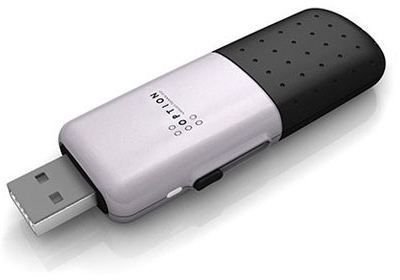What is the Definition of an Internet Service Provider?
What Is an ISP?
An Internet service provider is a company that connects you to the Internet, usually for a monthly fee. Most modern ISPs offer either cable or DSL service, though there are also providers offering dial-up, satellite, fiber optic, and cellular connections. (These will be discussed in more detail in later sections.)
Usually, Internet connections can be acquired at the least expense from your local phone (for dial-up or DSL) or cable television (for cable or fiber optic) company. Satellite television providers offer satellite Internet connections, and cellular phone carriers offer cellular Internet connections.
Phone Company Connections
As previously mentioned, your local phone company can offer DSL or dial-up Internet connections. Both of these connections are carried over the same lines as your phone calls throughout your house.
Dial-up connections use what’s called a “circuit-switched” connection to your ISP – that is, it remains connected constantly until you close the connection. This sounds like a good thing – after all, traditional telephone service is circuit-switched – but this also means that the line it uses can’t receive any other connections while you’re on the Internet, and every computer that needs a connection optimally should be given its own line. Though few ISPs actively promote dial-up packages for consumer use due to its slow speeds, they are still available and a good option if you need a low-speed, persistent connection, such as for a credit card line. The connection speed maximum as defined by the IEEE is 56 kilobits per second, or 56 Kbps.
A digital subscriber line, more commonly known as DSL, uses a “packet-switched” connection – that is, your computer connects to the Internet through a DSL connection for long enough to send or receive information, then drops the connection to free it up for other computers to use. This process of acquiring and dropping the connection is transparent, since you don’t have to do anything but surf the Internet for it to work. DSL is faster than dial-up, ranging from 128 Kbps to 8 megabits per second, or Mbps. DSL, like its predecessor dial-up, allows for a private connection, which means that the computers on your local network are the only ones that are on your connection all the way to the ISP. However, the connection speed can vary depending on the distance to your ISP. This connection type is best used in a private home or a small to medium business setting.
Cable Service Providers

Cable-based Internet providers differ from phone-based Internet providers in that the Internet signal travels across the copper wire that runs into your home to provide cable television. Like DSL, this is a packet-switched connection. Cable is similar to DSL in its speeds, although the maximum speed that cable can offer can go as high as 27 Mbps. One thing that makes cable different from DSL, though, is the fact that it is generally a shared connection – that is, everyone in your area who is also using cable Internet is using the same bandwidth from the time the signal leaves your home to the time it reaches the ISP. Because of this, speeds may be affected by how many people are on the network at a given time. Cable Internet is generally best used in the home, since the shared connection can’t absolutely guarantee a speed which businesses may rely on.
Satellite Service Providers
Satellite Internet services are usually only practical in locations where more traditional services cannot be deployed. As the name indicates, the service relies on a clear line of sight to a satellite orbiting the earth. These connections are best used by locations that are constantly on the move, such as vessels at sea, airplanes in flight, or vehicles moving on land. Upload speed on a satellite connection is about a tenth of the download speed, which peaks at about 500 Kbps.
Cellular Service Providers

Most cell phone carriers offer what are called “aircards”, cards that plug into either a PCMCIA / PCMCIA Express slot on a laptop or desktop, or a USB modem that plugs into a USB port on a computer. These devices allow your computer to connect to a cellular network, much like your cell phone does. Some carriers also offer plans that allow you to use your cellular phone itself as a modem for your computer. These carriers offer 3G connection speeds and/or 4G connection speeds. The actual speed itself can vary depending on the number and availability of cellular towers in the area you’re in when trying to connect. Cellular broadband is a very good option for mobile businesspeople and those on the go.
Municipal WiFi and WiMAX
Most large cities have started setting up municipal Wi-Fi connections for either public use or for city employees only. Even some smaller cities have these municipal networks set up for emergency service use, to make it easier for police to get information on a vehicle or location, and ambulances and fire services to get to locations by finding the best routes on interactive maps. When available to the public, municipal Wi-Fi relies on hotspots, or areas covered by one or more interconnected wireless access points, such as wireless routers. Some of these municipal Wi-Fi networks actually offer high-speed Internet access at little cost compared to other, more traditional broadband providers, or sometimes no cost at all.
WiMAX is an emerging telecommunications technology aimed at providing interconnectivity over longer distances than other types of wireless connection types. While traditional wireless routers in a municipal network have the range of most cellular phones, WiMAX can cover areas of up to 3000 square miles and bring speeds similar to DSL or cable.
Sources
Vachon, Bob and Rick Grazini. “Accessing the WAN, CCNA Exploration Companion Guide.” Ch 6, pp 384-401.
Other information from author’s own knowledge and experience.
Images copyright Creative Commons.
